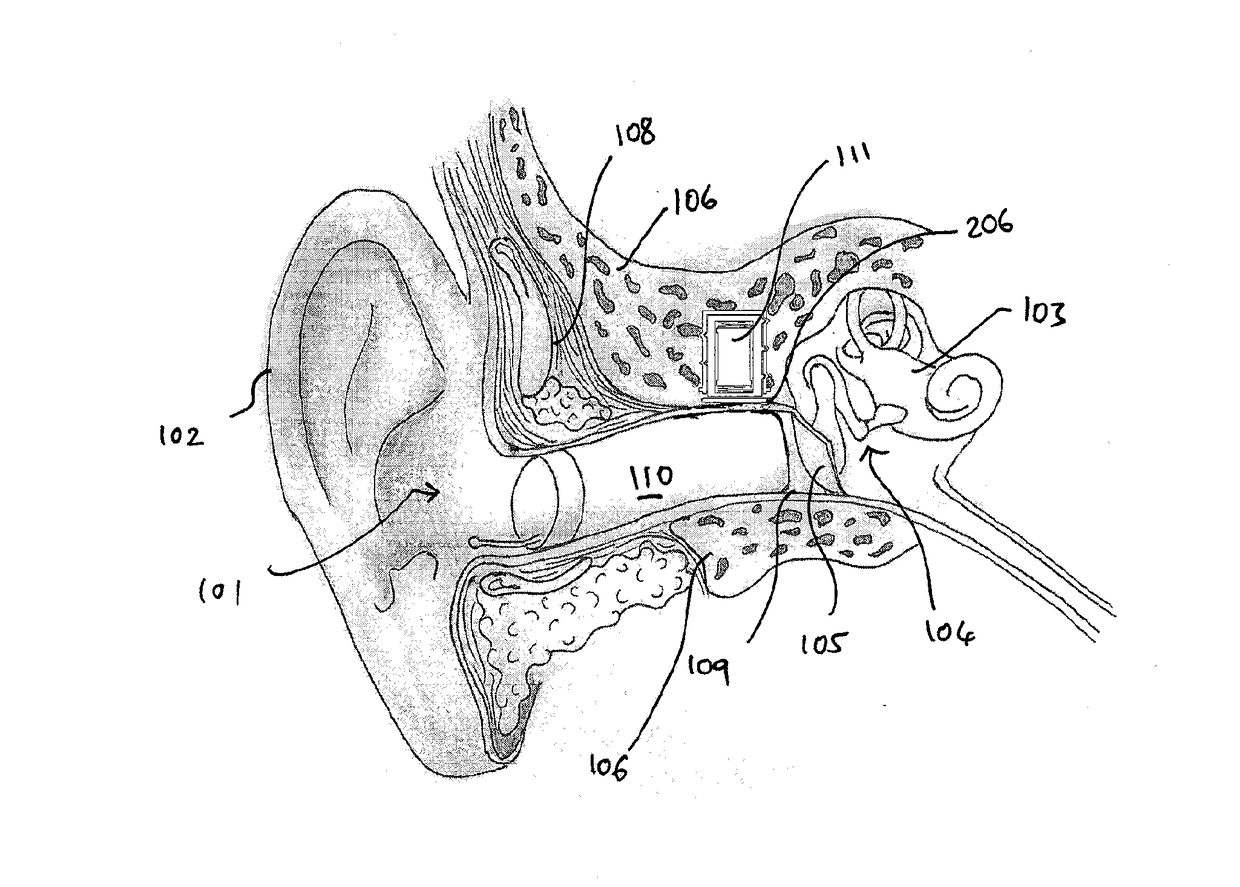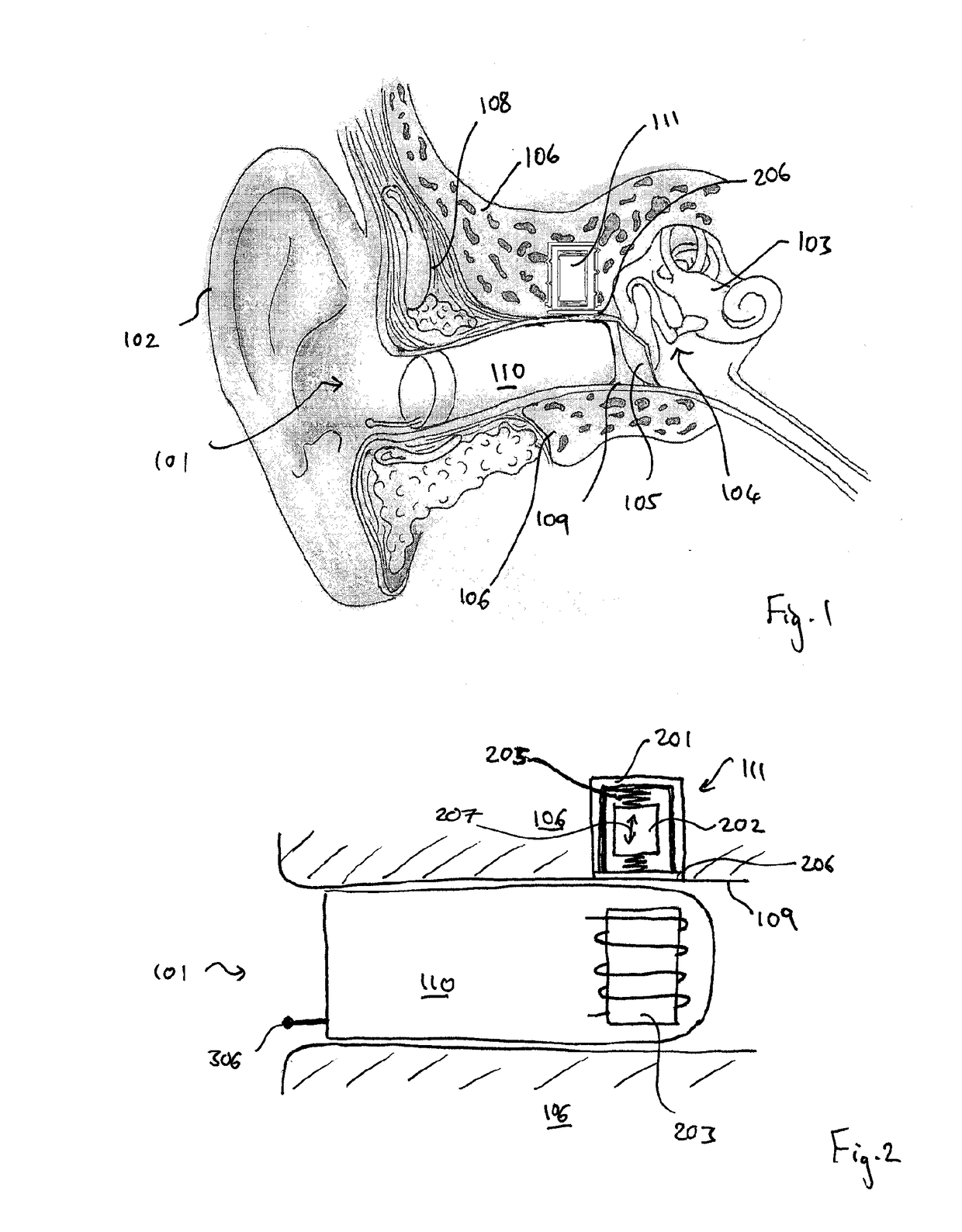Hearing aid
a hearing aid and hearing aid technology, applied in the field of hearing aids, can solve the problems of device discomfort, insufficient or inconvenient use of air conduction hearing aids, and hearing impairmen
- Summary
- Abstract
- Description
- Claims
- Application Information
AI Technical Summary
Benefits of technology
Problems solved by technology
Method used
Image
Examples
Embodiment Construction
[0085]The following description is presented by way of example to enable any person skilled in the art to make and use the invention. The present invention is not limited to the embodiments described herein and various modifications to the disclosed embodiments will be readily apparent to those skilled in the art.
[0086]There is provided improved apparatus for assisting hearing in humans and animals which addresses the shortcomings of conventional hearing aid devices. There is also provided a bone implant which represents improved apparatus for coupling vibrational energy into the temporal bone. There is also provided a hearing aid device adapted for wear in the ear canal and for inducing vibration in the bone implant.
[0087]A cross-sectional representation of the human ear is shown in FIG. 1. The ear canal 101 provides a channel along which environmental sounds captured by the auricle 102 are directed to the tympanic membrane 105. Vibrational movement of the tympanic membrane leads t...
PUM
 Login to View More
Login to View More Abstract
Description
Claims
Application Information
 Login to View More
Login to View More - R&D
- Intellectual Property
- Life Sciences
- Materials
- Tech Scout
- Unparalleled Data Quality
- Higher Quality Content
- 60% Fewer Hallucinations
Browse by: Latest US Patents, China's latest patents, Technical Efficacy Thesaurus, Application Domain, Technology Topic, Popular Technical Reports.
© 2025 PatSnap. All rights reserved.Legal|Privacy policy|Modern Slavery Act Transparency Statement|Sitemap|About US| Contact US: help@patsnap.com



